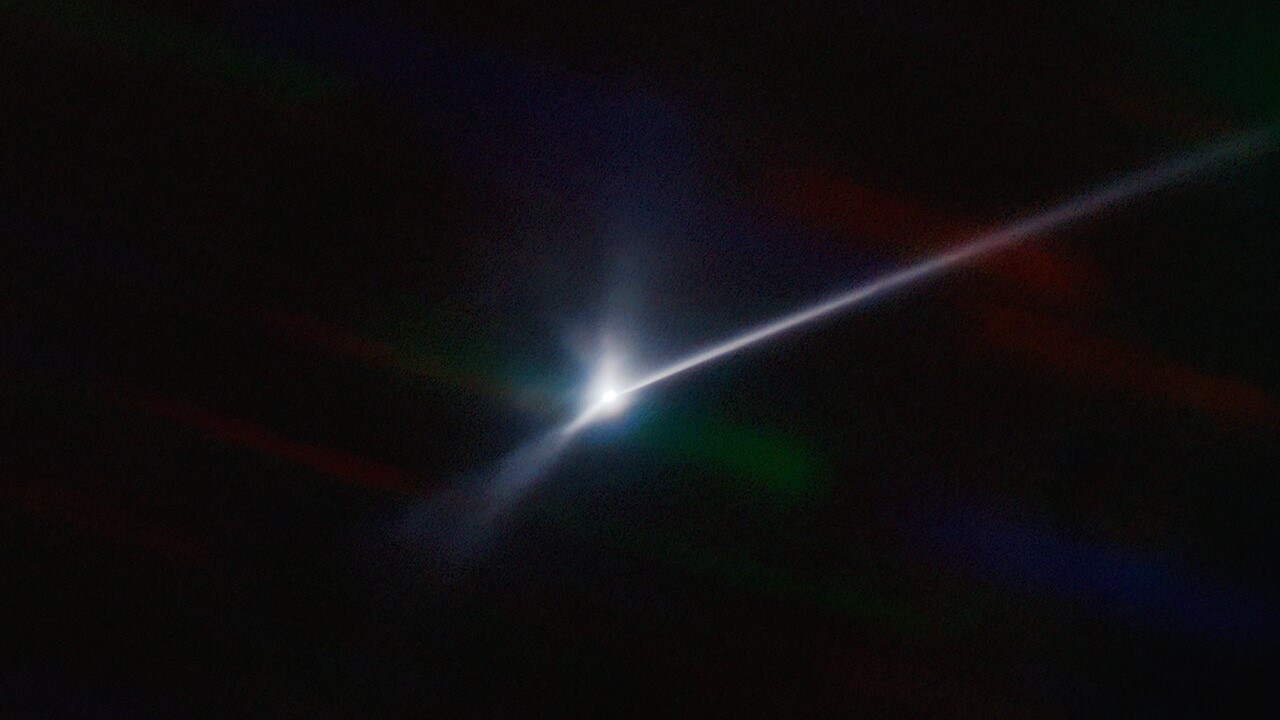DART impact gave asteroid Dimorphos a debris tail thousands of miles long (stunning photo)

A new stunning image shows that two days after NASA's Double Asteroid Redirection Test (DART) spacecraft slammed into the asteroid Dimorphos, the space rock had grown a tail of glowing debris extending thousands of miles.
The comet-like tail is made of dust and debris was blasted from the surface of Dimorphos, part of a double asteroid system, by the intentional impact of DART, the first mission designed to test whether such a collision could divert a hypothetical asteroid threatening to hit Earth. Dimorphos' new tail was imaged by astronomers Teddy Kareta from the Lowell Observatory and Matthew Knight from the U.S. Naval Academy using the 4.1-meter Southern Astrophysical Research (SOAR) Telescope, at the National Science Foundation-funded NOIRLab's Cerro Tololo Inter-American Observatory in Chile.
"It is amazing how clearly we were able to capture the structure and extent of the aftermath in the days following the impact," Kareta said in a statement.
Related: Here's the last thing NASA's DART spacecraft saw before it crashed
Observing the ejected material could allow scientists to better determine the nature of the surface of Dimorphos by revealing just how much material the collision with DART ejected, the speed at which the material was launched and the size of the ejected particles. This knowledge could ultimately help space agencies like NASA protect Earth from asteroid impacts because a better understanding of asteroid structure and composition helps scientists model how best to divert them.
The material in the dust trail was initially ejected on Sept. 26 when DART hit Dimorphos, forming a cloud around the asteroid. The tail-like structure formed when radiation pressure from the sun pushed the debris away from the body of the asteroid, just as happens with the tails of comets as they approach the sun from the distant reaches of the solar system.
The SOAR image shows Dimorphos' new feature extending from the center of the image to the right-hand edge of the image. Using Dimorphos' distance from Earth at the time the image was captured, the astronomers estimated the tail was around 6,200 miles (10,000 kilometers) long. (Before the impact, scientists estimated that Dimorphos itself was about 525 feet, or 160 meters, wide.)
Get the Space.com Newsletter
Breaking space news, the latest updates on rocket launches, skywatching events and more!
SOAR will continue to observe the aftermath of the DART impact, collecting data that will help researchers assess how successful this attempt to modify the orbit of an asteroid has been. SOAR is a key member of the Astronomical Event Observatory Network (AEON) of telescopes, which is dedicated to nimbly following up on reports of new astronomical phenomena.
"Now begins the next phase of work for the DART team as they analyze their data and observations by our team and other observers around the world who shared in studying this exciting event," Knight said. "We plan to use SOAR to monitor the ejecta in the coming weeks and months. The combination of SOAR and AEON is just what we need for efficient follow-up of evolving events like this one."
Follow us on Twitter @Spacedotcom and on Facebook.
Join our Space Forums to keep talking space on the latest missions, night sky and more! And if you have a news tip, correction or comment, let us know at: community@space.com.

Robert Lea is a science journalist in the U.K. whose articles have been published in Physics World, New Scientist, Astronomy Magazine, All About Space, Newsweek and ZME Science. He also writes about science communication for Elsevier and the European Journal of Physics. Rob holds a bachelor of science degree in physics and astronomy from the U.K.’s Open University. Follow him on Twitter @sciencef1rst.









